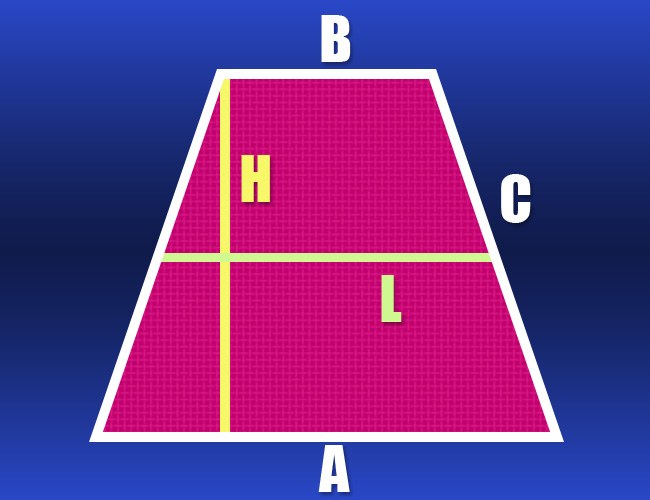Instruction
1
If you know the lengths of both bases (a and b) and the length of the sides (c), the perimeter (P) of this geometric shape is calculated very simply. Since the trapezoid isosceles, then its sides have the same length, this means that you are aware of the lengths of all sides - just fold them up: P = a+b+2*c.
2
If the lengths of both bases of the trapezoid is unknown, but given the length of the middle line (l) and lateral (c), and these data are sufficient to calculate the perimeter (P). The middle line parallel to both bases and equal in length to their sum. Double this value and add to it, too, twice the length of the sides - this will be the perimeter of an isosceles trapezoid: P = 2*l+2*c.
3
If the conditions of the problem are known the lengths of both bases (a and b) and height (h) of an isosceles trapezoid, then using these data it is possible to restore the length of the missing side. This can be done considering a rectangular triangle in which the hypotenuse is the unknown side, and the side - height and short period, which it cuts off from the long base of the trapezoid. The length of this cut can be calculated by dividing in half the difference between the lengths of the larger and smaller bases: (a-b)/2. The length of the hypotenuse (the side of the trapezoid), according to the Pythagorean theorem, is equal to the square root of the sum of squared lengths of the two known sides. Replace in the formula of the first step, the length of the sides of obtained expression, and you get a formula for the perimeter: P = a+b+2*√(h2+(a-b)2/4).
4
If the conditions of the problem given length of the smaller base (b) and lateral (c), and also the height of an isosceles trapezoid (h), in considering the same auxiliary triangle, as in the previous step, you will have to calculate the length of the leg. Again, use Pythagorean theorem - the desired value will be equal to the square root of the difference between the squared length of the side (hypotenuse) and height (side): √(c2-h2). On this segment of the unknown base of the trapezoid, you can restore its length double this expression and add to the result the length of the short base: b+2*√(c2-h2). Substitute this expression into the formula from step one and find the perimeter of an isosceles trapezoid: P = b+2*√(c2-h2)+b+2*c = 2*(√(c2-h2)+b+c).


